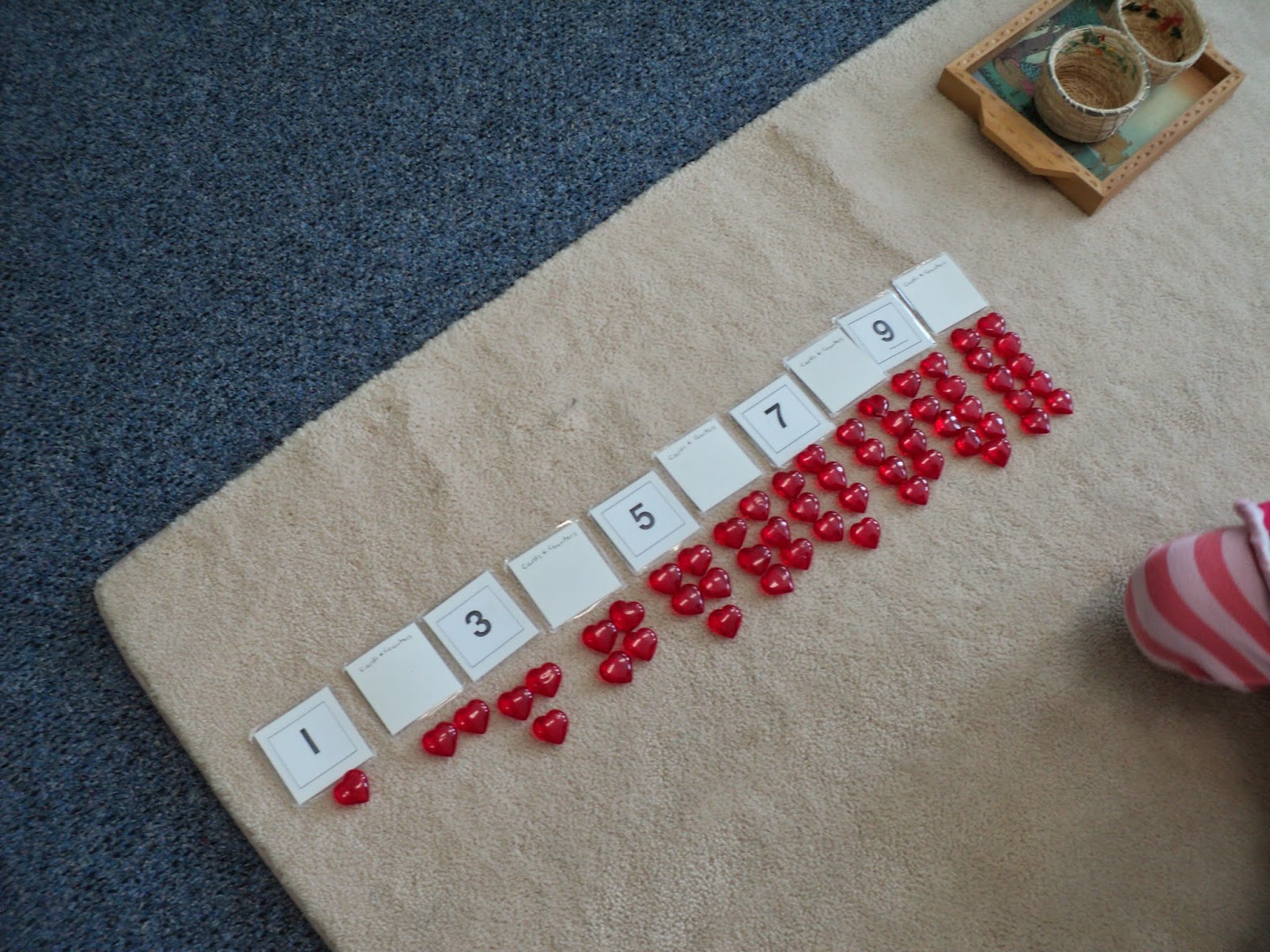Taking Home A Reading Book
In the Montessori Language curriculum, children are not taught the names of the letters of the alphabet. They are taught the first sound that each letter makes with the Sandpaper Letters. |
| The Sandpaper Letters |
This material helps the child associate the sounds of speech with their written symbol. Lessons are given individually and each child works through the letters at their own pace. When a child knows all of his/her sounds, s/he begins work with the Large Moveable Alphabet and Pink Object Boxes as described in previous posts.
 |
| The Large Moveable Alphabet |
 |
| The Pink, Blue and Green Object Boxes |
 |
| Spelling Words |
Independent reading begins to develop at this time. When a child is able to read individual words, they are given a reading book to take home.
This is quite a momentous occasion in our classrooms and all of the children are truly happy and proud of their classmate. It is always lovely to see fellow classmates congratulate the new reader on his/her accomplishment. Of course the child with the reading book couldn't be happier.
Introduction to Teens
In part one of this blog post, two exercises illustrated the young child's introduction to numbers to ten. Once a child is able to associate quantity and symbol for numbers zero to ten, the decimal system and the teens and tens are introduced concurrently.
In the following photographs, three year old E. is working with the Teens material. The primary purpose of this material is to associate the names 'eleven' to 'nineteen' with their quantities and symbols.
 |
| E. is taking the bead bars out of the box. |
This material consists of nine different bead bars called the Short Bead Stair. They range in length from one bead to nine beads. Each bead is a different colour. It also consists of nine golden ten bead bars.
 |
| The Teens Material |
E. begins by forming the Short Bead Stair in the shape of a triangle. The base (the one bead bar) is on the top.
 |
| Forming the Short Bead Stair |
 |
| Forming the Short Bead Stair |
 |
| Laying out the Ten-Bead Bars |
The child then sets out one ten-bead bar and sets out the one bead to the right of it to make eleven. The child continues with twelve and thirteen. The teacher gives the child a three period lesson on these names. If the child shows interest, three more numbers can be introduced. If not, the numbers can be introduced at another time.
Birthday Circle
 |
| Walking Around the Sun |
The birthday child receives birthday wishes from each classmate. These wishes are so adorable! At the end of the circle, the children sing 'Happy Birthday'. The birthday child blows out the candle.
 |
| Blowing Out The Candle |
The Pink Tower
The Pink Tower is part of the Sensorial area of the Montessori classroom. This area of the classroom helps to develop the child's senses. The Pink Tower is an early Sensorial exercise. The main purpose of this material is to help develop the child's visual discrimination of differences in three dimensions. It also helps in the development of fine muscular coordination.
This material consists of ten pink wooden cubes varying in size and differing equally in all dimensions by one centimetre. The child is asked to bring The Pink Tower to a mat. Each cube is taken individually and placed randomly on a mat. The teacher then begins to build the tower vertically beginning with the largest cube. Once the tower has been built, the child and teacher examine the tower from all sides. The tower is dismantled cube by cube. The child is then offered a turn.
 |
| N. Is building The Pink Tower |
The Button Frame
The Button Frame is part of the Practical Life area of the Montessori classroom. These activities are the first activities a child is introduced to when they begin their Montessori education. These activities - pouring, sweeping, hanging clothes on a hook, setting out a place setting and many more - allow the child to try doing the things they see the adults around them doing. These activities fall into three categories. The Dressing Frames fall into the category of Care of Oneself or Self Development.
The purpose of the Button Frame is to help the child develop co-ordination and independence.
 |
| Working With The Button Frame |
Our Youngest Student
Our youngest student began with us in January and turned three in this calendar year. She is a little camera shy. When she sees the camera she says "No thank you." We did manage to snap some photos of her.
 |
| Making a Snowman |
 |
| Baking Cookies on Pajama Day |
 |
| Working with the Spindle Boxes |
I hope you have enjoyed reading about the work the children are doing in the classrooms. They are consistently busy and we are so proud of their efforts and their accomplishments.






















